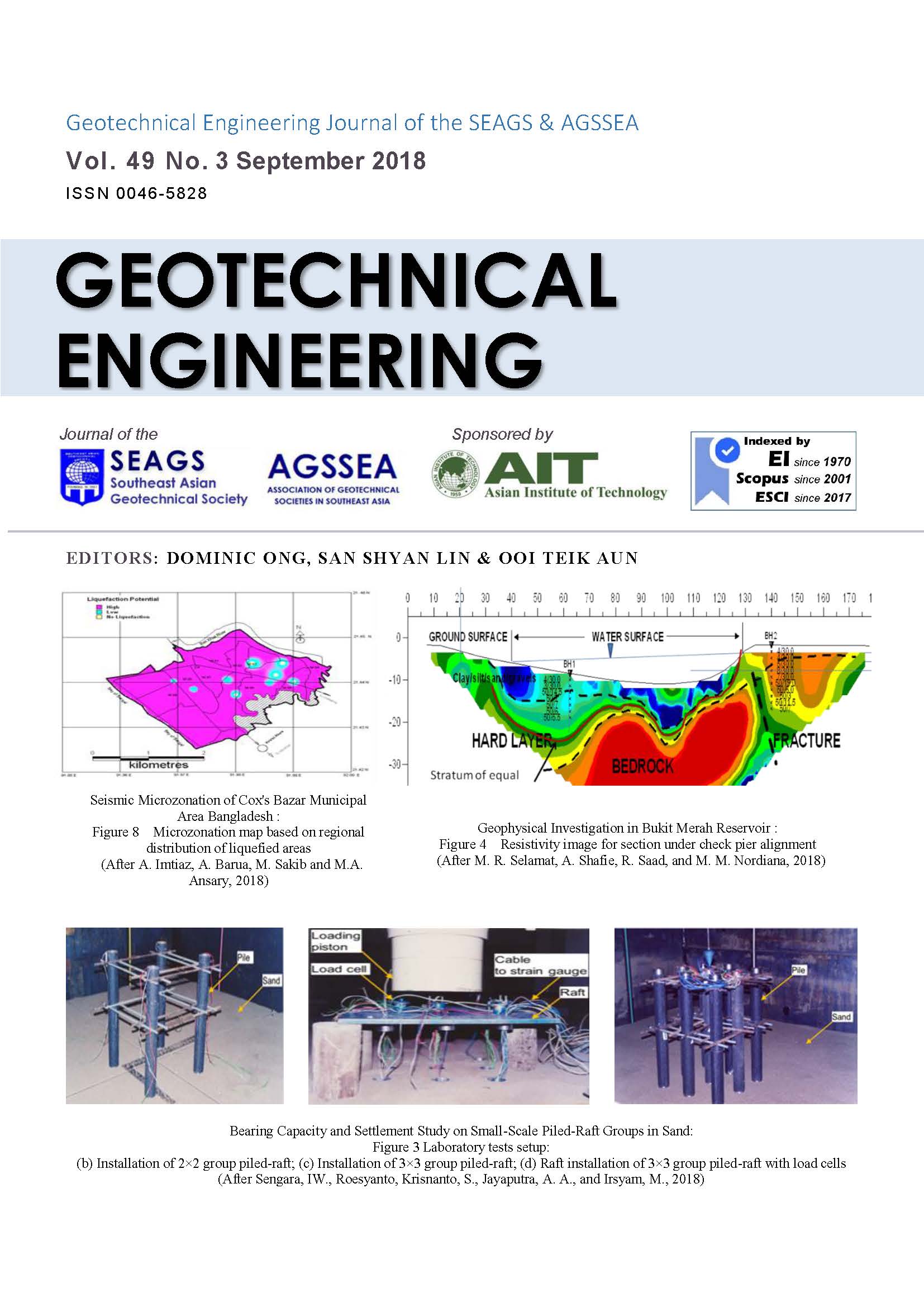Influence of Two Rough Parallel Joint Surface Profiles on Stress Wave Energy Dissipation
Main Article Content
Abstract
A new method called YUV dimension is proposed to describe joint surface configuration on the basis of the interdisciplinary theory of iconography, graphics, and fractal geometry. This method can be used as substitute for traditional fractal dimensions. On this basis, the influence of two joint surface profiles (described by using the YUV dimension method) on stress wave energy dissipation is investigated by split Hopkinson pressure bar on embedded rough parallel two-joint rocks. The following conclusions are drawn: (1) the YUV dimension method, a new approach for characterizing surface configuration, exhibits more advantages than the traditional dimension; (2) the energy dissipation of the joints increases with increasing two-joint dimensions or their sums. This increase is attributed to the fact that the increase in YUV dimensions leads to the decrease in rock joint stiffness; thus, a decrease in rock joint stiffness leads to the increase in stress wave energy dissipation. A nonlinear relationship also exists among two YUV dimensions and energy dissipation. The nonlinear relationship is attributed to the nonlinear deformation of the joints. For engineering applications, a two-variable function between the energy dissipation and YUV dimensions of two joints is also formulated.
Article Details

This work is licensed under a Creative Commons Attribution-NonCommercial-NoDerivatives 4.0 International License.
Copyright © 2019 Association of Geotechnical Societies in Southeast Asia (AGSSEA) - Southeast Asian Geotechnical Society (SEAGS).


